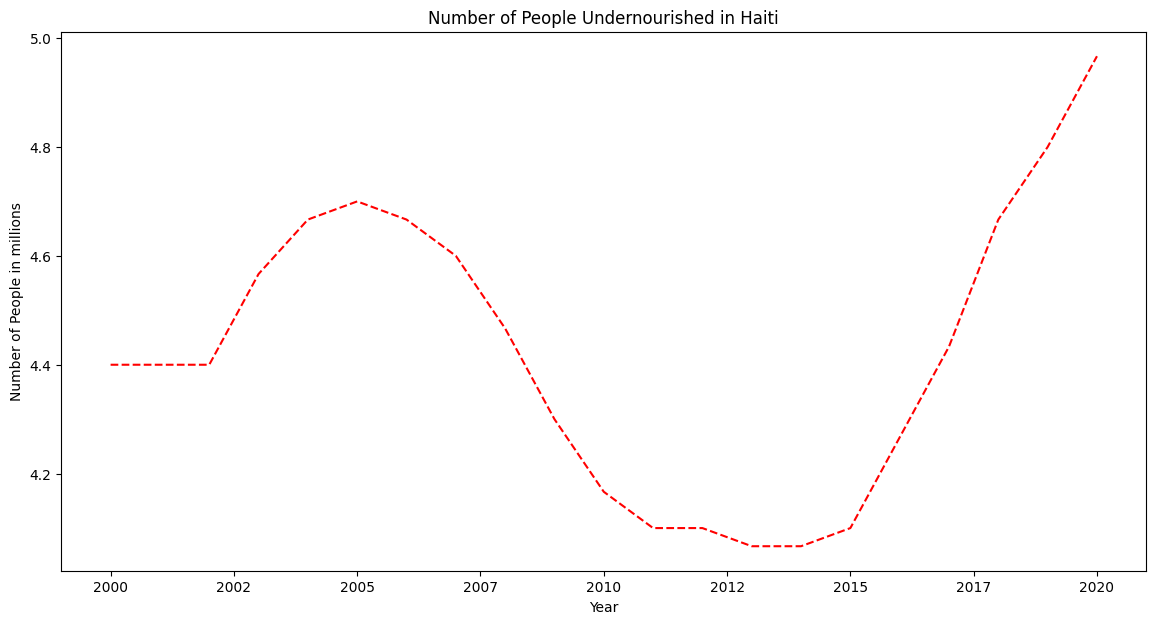Haiti grapples with a critical issue of widespread deforestation, causing detrimental impacts on the nation’s ecology, economy, and populace.
Poverty among Haitians determines their dependency on wood as a primary fuel source. This, coupled with increased agricultural expansion, has led to extensive deforestation. This process is not isolated; it is causing progressive land erosion, desertification, and an even greater loss of nutrients in Haitian soil. Erosion further exacerbates deforestation, leading to more (infertile) land being cleared for agricultural purposes. Erosion processes are a major factor contributing to landslides and flooding, which are factors massively contributing to the loss of nutrients in the soil.
Deforestation > Agricultural Expansion > Erosion forms a vicious cycle where solutions to existing problems become the causes of these problems.
 This shows forest cover of Haiti in year 2000, it was obtained using Hansen Global Forest Change v1.10 (2000-2022) dataset. Download in Full Resolution
This shows forest cover of Haiti in year 2000, it was obtained using Hansen Global Forest Change v1.10 (2000-2022) dataset. Download in Full Resolution
The deepening crisis has a significant impact on undernourishment among the Haitian population, with nearly 5 million people facing “catastrophic” food insecurity. This represents over 42% of the population. The problem has been escalating rapidly since the year 2015/2016, which also marked the most extensive deforestation in Haitian history.
“Food insecurity is rapidly increasing in Haiti, from an estimated 29% of residents in the capital in 2016 [5], to current estimates from October 2022 indicating that Haitian residents now face “catastrophic” food insecurity—a designation that is a first for Haiti and for any country in the Western Hemisphere [6]. Reasons for FIS in Haiti are complex and multifactorial, spanning issues such as lack of food availability, access, and stability, due to the historical lack of sustainable development from geopolitical and environmental factors over several decades [7,8]. From its independence, Haiti’s infrastructure development was hampered by an unfair debt to France, supported by exploitive policies in Western countries [9]. In the 20th century, US occupation, coupled with Haiti’s national government, did not invest in sustainable institutions, detracting from business investment and resulting in a loss of fertile agricultural lands and farming infrastructure. Moreover, food tariffs and commoditization of foods have led to an overdependence on expensive, often poor-quality food imports, reducing the access and availability of fresh and nutritious foods in Haiti [10,11]. Environmental factors, such as climate-driven disasters and conflict, deepen the already weak food system by disrupting local agricultural production. Deforestation also left the land vulnerable to soil erosion from weather events, making it difficult to have sustainable local food. 1

data for years 2000 and 2001 was unavailbe and I have interpolated and filled data from 2002 instead. All statistical data comes from Food and Agriculture Organization of the United Nations
Please find visualization and more statistics regarding >Deforestation
-
Rasul R, Rouzier V, Sufra R, Yan LD, Joseph I, Mourra N, Sabwa S, Deschamps MM, Fitzgerald DW, Pape JW, Nash D, McNairy ML. Extreme Food Insecurity and Malnutrition in Haiti: Findings from a Population-Based Cohort in Port-au-Prince, Haiti. Nutrients. 2022 Nov 17;14(22):4854. doi: 10.3390/nu14224854. PMID: 36432540; PMCID: PMC9695391. ↩